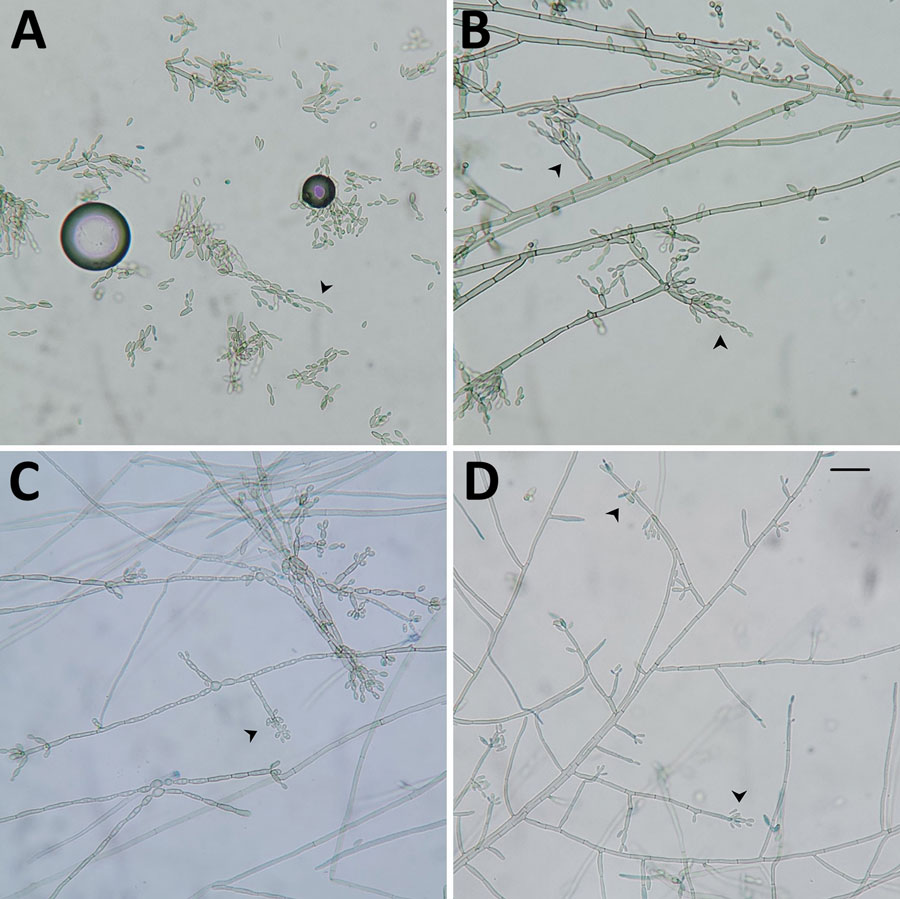Volume 30, Number 6—June 2024
Dispatch
Molecular Identification of Fonsecaea monophora, Novel Agent of Fungal Brain Abscess
Figure 1

Figure 1. Lactophenol cotton blue mount of a culture from a brain biopsy sample from a 3-year-old patient in India with Fonsecaea monophora infection, showing dematiaceous septate hyphae with different types of conidiation (arrowheads). A) Multicelled sessile conidial chains resembling genus Cladophialophora, leading to the initial misidentification. B) Fonsecaea-type conidiation. C) Rhinocladiella-type conidiation. D) Asterisks of Fonsecaea-type conidiation.
Page created: April 24, 2024
Page updated: May 22, 2024
Page reviewed: May 22, 2024
The conclusions, findings, and opinions expressed by authors contributing to this journal do not necessarily reflect the official position of the U.S. Department of Health and Human Services, the Public Health Service, the Centers for Disease Control and Prevention, or the authors' affiliated institutions. Use of trade names is for identification only and does not imply endorsement by any of the groups named above.